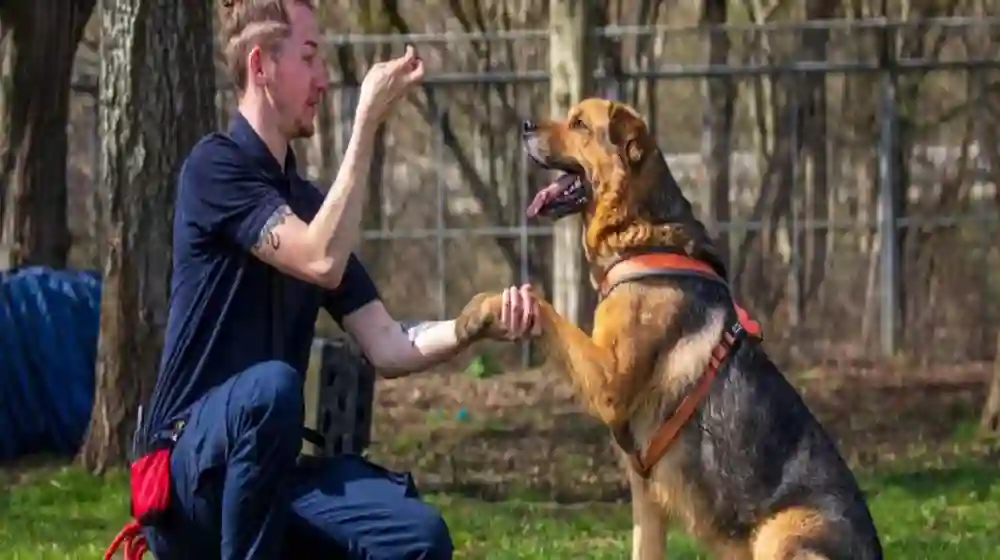
How to Train Your Pet to Follow Simple Commands
Training a pet isn’t just about obedience—it’s about communication, trust, and, let’s be real, keeping your furniture from becoming a chew toy. I learned this the hard way when my first pup decided my sneakers were a delicacy. (RIP, favorite Nikes.)
Anyway, training isn’t rocket science. But it does take consistency, patience, and the right incentives (treats, belly rubs, or the promise of freedom from the dreaded bath). Let’s break it down.
How Pets Actually Learn (Hint: Bribes Work)
Most pets (especially dogs) are in it for the rewards. They learn by associating actions with consequences. Sit? Get a treat. Roll over? Get a belly rub. Ignore a command? Get the cold stare of disappointment. But punishment? Nah, that just confuses them and makes training harder.
Pick Commands That Matter (And Sound Cool)
Before you start, decide on the must-know commands. Here’s a solid starter pack:
- Sit – Helps your pet chill out and look obedient in front of guests.
- Stay – Keeps them from running into traffic. Big win.
- Come – Because chasing your pet through the neighborhood isn’t fun.
- Leave it – Saves your dinner from becoming dog food.
- Down – Helps curb that overenthusiastic jumping habit.
- Heel – For when you want a civilized walk, not a sled-dog race.
Training, Step by Step (With Some Trial & Error)
1. Positive Reinforcement—aka Bribery
Here’s the deal: If they do it right, they get a reward. Simple. Treats work wonders, but so do enthusiastic “GOOD DOG!” shoutouts or extra playtime.
Fast forward past three failed attempts at teaching “stay”—turns out, my dog just wanted the treat, not the praise. Adjust your rewards accordingly.
2. Keep Sessions Short (Because Attention Spans Are a Joke)
Pets, like toddlers, get bored fast. Keep training sessions to 5–10 minutes, max. And quit while you’re ahead—ending on a high note makes them eager for the next round.
3. Consistency is Key (No, Really, Stick to One Word)
Pick a command and stick with it. Don’t say “Come here” one day and “Get over here, buddy” the next. They’re not fluent in human gibberish.
4. Start Somewhere Boring (No Squirrel Distractions)
Begin in a quiet space. Once they’ve got the basics down, add distractions—other people, background noise, or the ultimate boss level: another dog.
5. Hand Signals Help (Especially When They Ignore You)
Pair verbal commands with gestures. A flat palm for “stay,” a downward motion for “lie down”—you get the idea. It’s like sign language, but for pets.
6. Be Patient (Yes, Even When They Pretend Not to Hear You)
Training takes time. Some pets pick it up fast, others—like my old cat—will ignore you entirely unless food is involved. Roll with it.
7. Level Up (Because Sitting for a Treat is Too Easy)
Once they master the basics, increase the challenge. Train in busier locations. Extend the time they hold a command. Test if they’ll “leave it” when it’s something they really want—like your sandwich.
When Training Goes Sideways (Which It Will)
Even with the best game plan, things go wrong. Here’s how to troubleshoot:
- They stop caring – Try better treats. Chicken? Cheese? Bacon? (Not my sandwich, though.)
- Progress stalls – Break it down into smaller steps. Sitting for half a second? That’s still a win.
- Too many distractions – Scale back. If a fly buzzing by ruins their focus, work in a calmer space.
- Ignoring you? – Check if you’re being consistent. Or if they’re just in a stubborn mood (happens to the best of us).
Training Never Really Ends (And That’s a Good Thing)
Even after they learn the commands, keep practicing. Make it part of daily life. Ask them to sit before meals or stay before opening the door. Repetition keeps them sharp—and reminds them that yes, you are in charge.
Final Thoughts (and a Nod to My Dog’s Sneaker-Chewing Past)
Training is part skill, part persistence, and part figuring out what your pet actually finds motivating. Do it right, and you’ll have a well-behaved buddy who listens—even when there’s a squirrel in the yard.
And if all else fails? At least you’ll have some hilarious training fails to look back on. (Like the time I tried to teach “roll over” and my dog just flopped dramatically on his side. Close enough.)